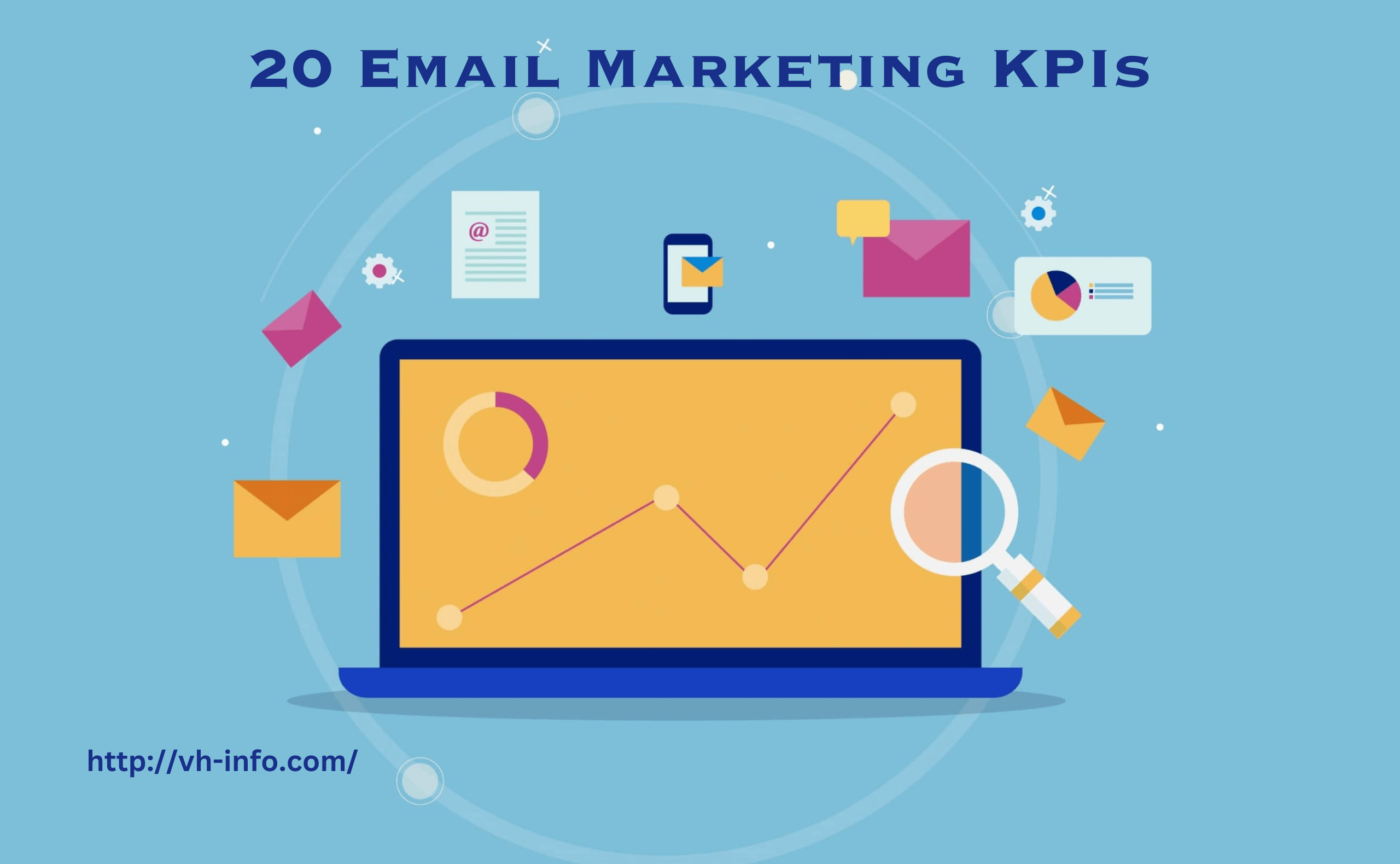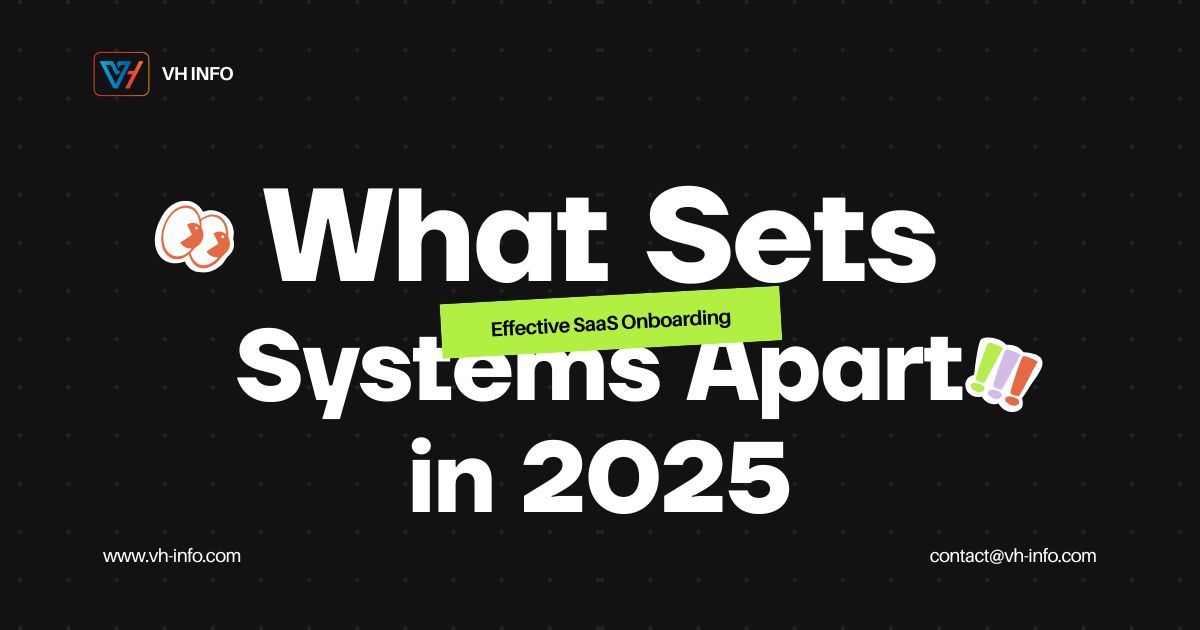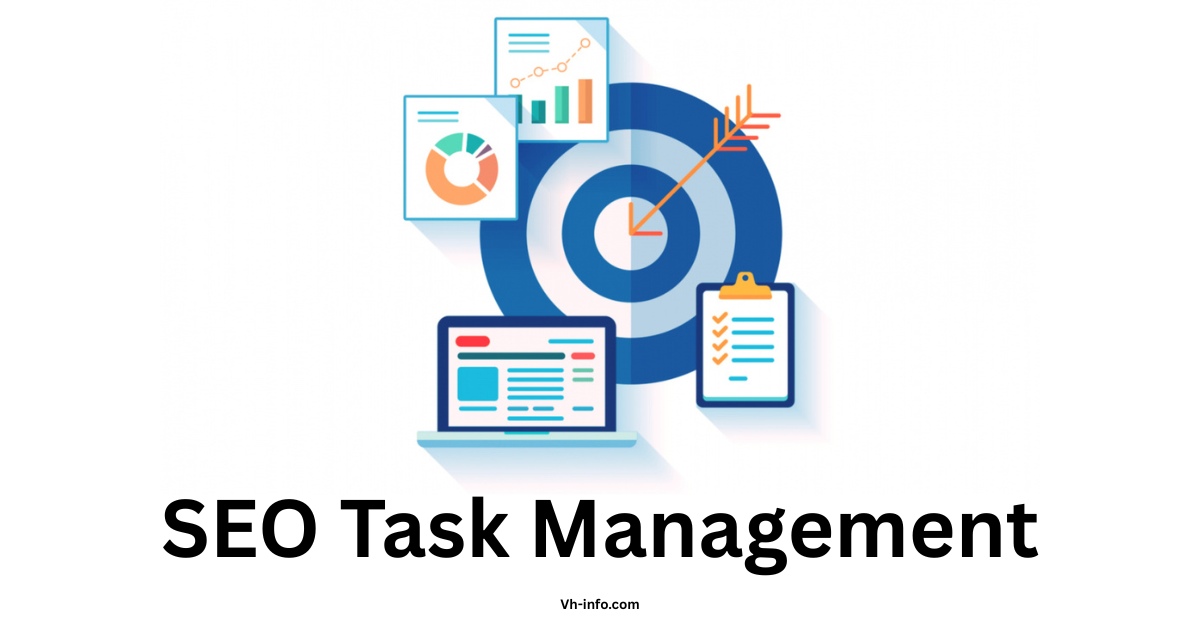Email Marketing KPIs
With so many metrics to track, it gets challenging for email marketers to determine which ones truly matter to accurately measure the effectiveness of your marketing campaigns. This article brings the perfect solution as we’ll be diving into the world of email marketing KPIs exploring the essential metrics that drive engagement, deliverability, conversions, and revenue.
Businesses generate an average of $36 for every $1 spent on email marketing. This makes email marketing one of the most convenient, effective, and profitable marketing channels to drive sales and conversions. However, you need to continuously monitor and optimize your campaigns for the best results.
From open rates and click-through rates to conversion rates and revenue per subscriber, we will cover all essential KPIs to keep your performance on track.
By the end of this read, you’ll have a comprehensive understanding of the most important Email Marketing KPIs to track and understand what the metrics imply towards measuring your campaign’s success. You’ll learn to optimize your email marketing strategies accordingly, drive remarkable results, and achieve your business goals.
Let’s dive in and unlock the power of must-have Email Marketing KPIs together.
20 Email Marketing KPIs To Track Performance For Success
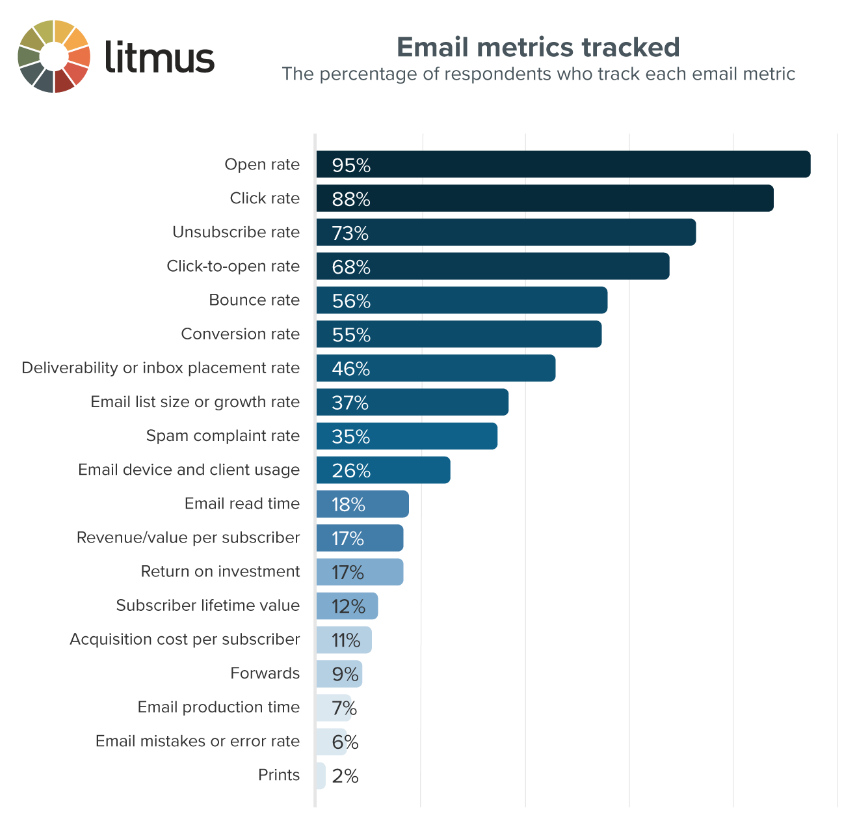 A successful campaign captivates your subscribers’ attention, builds meaningful connections, and drives higher conversions and revenue. Interestingly, the email marketing industry is expected to reach 11 billion USD by the end of 2023. Let’s dive into the essential email metrics that will help you grab your fair share of the email marketing revenue and achieve conversion success.
A successful campaign captivates your subscribers’ attention, builds meaningful connections, and drives higher conversions and revenue. Interestingly, the email marketing industry is expected to reach 11 billion USD by the end of 2023. Let’s dive into the essential email metrics that will help you grab your fair share of the email marketing revenue and achieve conversion success.
1. Open Rate: Ignite Curiosity
The open rate measures the percentage of recipients who open your emails. A high open rate indicates strong email subject lines, compelling preheaders, and effective email preview text.
Here’s an easy way to calculate the email open rate:
Open rate = (number of emails opened / number of emails delivered) x 100
Let’s take a look at Zoom’s captivating subject line that piques curiosity and creates a sense of urgency. Using phrases like “your special offer expires soon” or “limited time offer” are ideal examples of subject lines that attract customers to open your email and take action.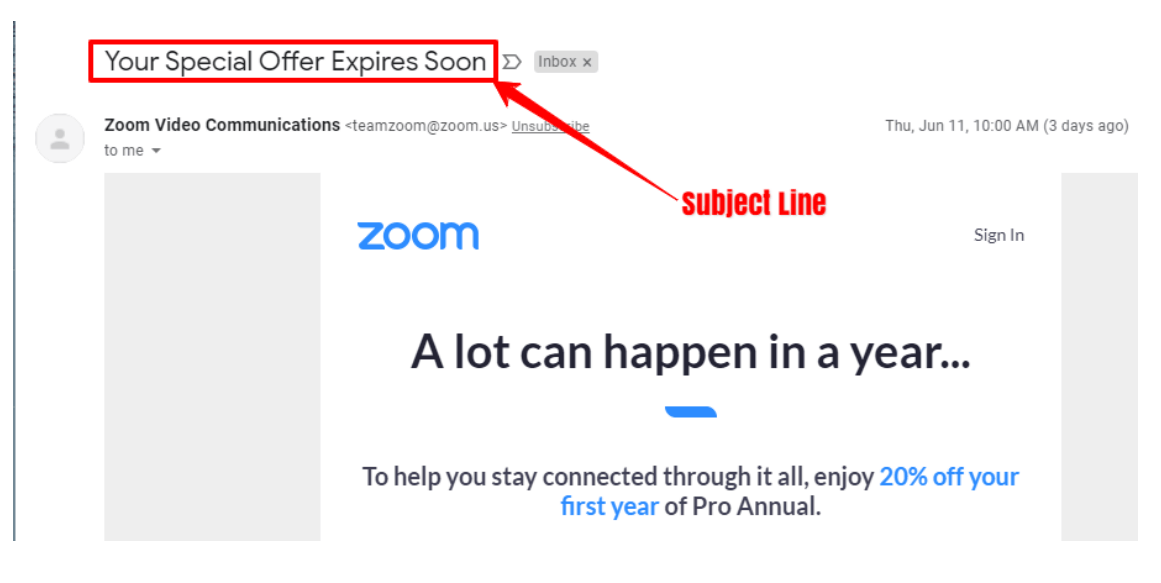 Expert advice to improve your open rate:
Expert advice to improve your open rate:
- Craft compelling and personalized subject lines that pique curiosity.
- Experiment with emojis, numbers, or power words to grab attention.
Let’s Discuss Next Email Marketing KPIs.
2. Click-Through Rate (CTR): Drive Action
The click-through rate measures the percentage of recipients who click on links within your emails. A high CTR signifies engaging content, clear calls to action, and effective email design. It’s one of the key email marketing metrics used to assess the content quality and the overall effectiveness of an email marketing campaign.
Here’s how to calculate the email CTR:
Click-through rate = (number of emails clicked / number of emails delivered) x 100
Take the example of this overseas hiring website that uses clear call-to-action buttons to propel users to take action. Also, notice the color of the CTA is intentionally kept vibrant and colorful compared to the rest of the text for better visibility. Putting a clear CTA like this into your marketing emails is more likely to improve your CTR and conversions.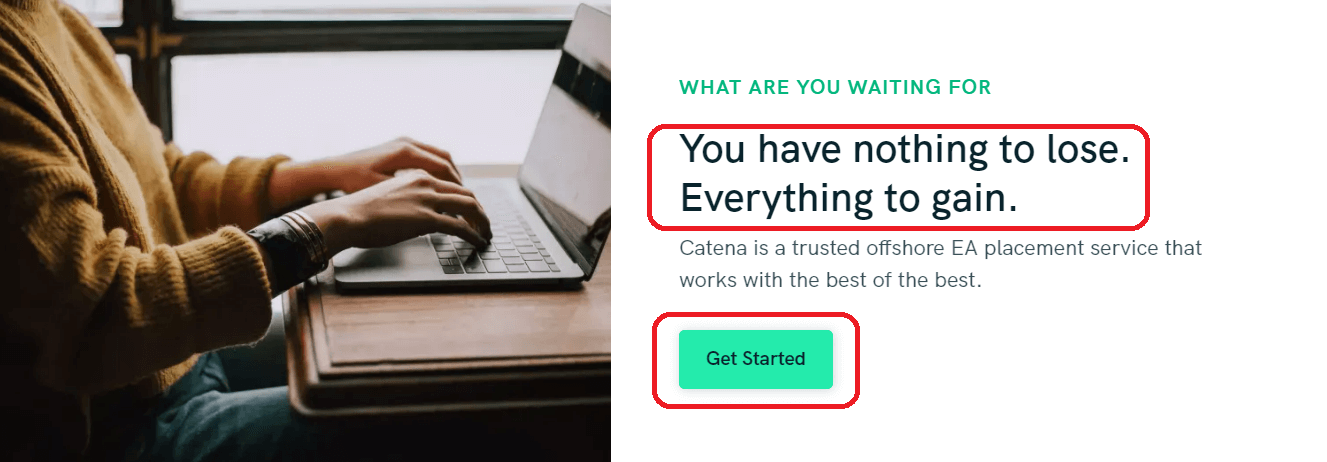 Expert advice to enhance your CTR:
Expert advice to enhance your CTR:
- Create clear and prominent call-to-action buttons.
- Use compelling and action-oriented copy to ensure link clicks.
- Optimize your email design for mobile devices to ensure easy navigation and interaction.
- Conduct A/B testing to refine your content, layout, and placement of email links to add more value to your future email campaigns.
Let’s Discuss Next Email Marketing KPIs.
3. Conversion Rate: Transform Readers Into Customers
The conversion rate measures the percentage of recipients who complete a desired action, such as making a purchase, filling out a form, or subscribing to a service. Many online businesses offer visitor incentives to get them to subscribe to their email newsletters. This is an effective strategy for personalized email marketing.
One of our favorite examples is this online lingerie store which offers a 10% discount to customers when they subscribe to their newsletter. Once subscribed, they will receive targeted emails featuring special discounts and offers to maximize the conversion rate. The photo below is an ideal example of a welcome marketing email with an incentive (15% discount) to turn prospects into customers.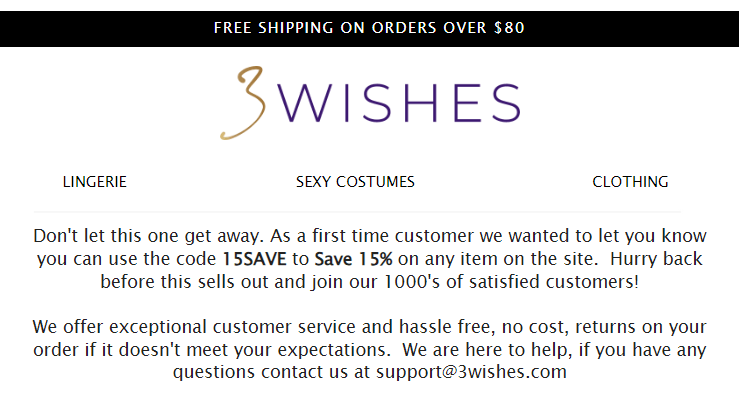 Here’s how to calculate the average email conversion rate:
Here’s how to calculate the average email conversion rate:
Conversion rate = (number of conversions/number of emails delivered) x 100
Expert advice to optimize your conversion rate:
- Implement clear and concise calls to action that guide recipients to desired actions.
- Create persuasive and visually appealing landing pages that align with your email content.
- Analyze and optimize your conversion funnel using email analytics tools to remove any obstacles or friction points.
Let’s Discuss Next Email Marketing KPIs.
4. Unsubscribe Rate: Retain Your Valued Subscribers
The unsubscribe rate indicates the percentage of subscribers who opt out of receiving your marketing emails. While some unsubscribes are natural, it’s crucial to keep this email metric as low as possible.
Calculate the email unsubscribe rate with this formula:
Unsubscribe rate = (number of unsubscribes/number of emails delivered) x 100
Expert advice to reduce unsubscribe rates:
- Provide valuable and relevant content that aligns with subscribers’ interests and needs.
- Offer subscription preferences, allowing subscribers to choose the types of content they wish to receive.
- Set clear expectations during the sign-up process about the type and frequency of emails you will send.
Let’s Discuss Next Email Marketing KPIs.
5. Forwarding/Shares: Amplify Reach
Encouraging recipients to forward or share your emails can significantly expand your reach and attract new subscribers. The email forwarding rate is highly dependent on creating compelling and share-worthy content that adds value to the lives of your subscribers. The more social shares your emails get, the higher your email campaign performance.
Here’s how to calculate this:
Email forward rate = (number of forwards/ number of emails delivered) x 100
A professional digital marketing agency will always leverage the following components into your digital marketing campaign to boost social shares and forwarding:
-
- Offer incentives or rewards for subscribers who refer friends or family to join your email list.
- Include social sharing buttons prominently in your emails to make it easy for recipients to share.
- Monitor and analyze the success of your forwarded emails to learn what resonates with your audience to implement in future campaigns.
Let’s Discuss Next Email Marketing KPIs.
6. Social Media Engagement: Extend Influence Beyond The Inbox
Integrating your email marketing efforts with social media can amplify your reach and enhance engagement. Track social media engagement metrics, such as likes, shares, comments, and followers gained from email campaigns. This will help evaluate how effective your email content is. You’ll know if your content is resonating with the target audience and providing value in their lives.
Moreover, it helps optimize content strategies, identify popular topics, and tailor future campaigns accordingly.
Here are some expert advice to leverage social media engagement:
- Run contests, giveaways, or interactive campaigns that encourage social sharing and participation.
- Share engaging and relevant content on your social media channels that complement your email campaigns.
- Include social media buttons and links in quality emails to encourage subscribers to connect with you on various platforms.
Let’s Discuss Next Email Marketing KPIs.

7. Bounce Rate: Overcome Delivery Hurdles
The bounce rate measures the percentage of emails that are not delivered to recipients’ inboxes. There are 2 types of bounce rates: “hard bounce” and “soft bounce.”
Soft bounce refers to a temporary delivery failure of an email because of a temporary delivery issue, such as a full inbox. A hard bounce is a permanent delivery failure caused by an invalid or non-existent email address.
High bounce rates can negatively impact your deliverability rate and sender reputation. Make sure to clean your subscriber list and remove inactive or invalid email addresses to overcome this issue.
Let’s say you’re a luxury hotel website with a segmented audience categorized into high-income and low-income. You should send personalized emails to each segmented group as the new hotel deals/offers that are relevant to one segment won’t be relevant to the other considering the purchasing power of the two segments.
Similarly, use a double opt-in process to verify email addresses and confirm subscribers’ interest. This helps prevent fake or mistyped email addresses from entering your list.
Calculate the email bounce rate with this formula:
Bounce rate = (number of emails bounced / number of emails sent) x 100
Let’s Discuss Next Email Marketing KPIs.
8. Spam Complaint Rate: Nurture Trust & Relevance
The spam complaint rate indicates the number of recipients who mark your emails as spam. High spam complaint rates can damage your sender reputation and jeopardize future email deliverability rates. The last thing you want is for your marketing emails to land in the spam folder of email recipients.
Here’s how to calculate the spam complaint rate:
Spam complaint rate = (number of spam complaints/number of emails delivered) x 100
Expert advice to reduce spam complaints:
- Use email marketing tools like mailchimp to minimize errors and email delivery delays.
- Set clear expectations about the type and frequency of emails they will receive.
- Obtain explicit permission from subscribers before adding them to your email list.
- Provide visible and easy-to-find unsubscribe email links to allow recipients to opt out easily.
Let’s Discuss Next Email Marketing KPIs.Read more about : What Does NFS Mean On Instagram ?
9. Inbox Placement Rate: Secure Landing In Subscribers’ Inboxes
The inbox placement rate measures the percentage of emails that successfully land in recipients’ primary inboxes. A high inbox placement rate is crucial for ensuring that your emails are seen and engaged with. To further improve this rate, consider performing a DMARC lookup to ensure your domain is properly authenticated.
Here’s how to calculate the inbox placement rate:
Inbox placement rate = (number of non-junked emails delivered / number of emails delivered) x 100
Expert advice to improve inbox placement:
- Follow best practices for email authentication, such as implementing SPF checker, DKIM, and free DMARC lookup.
- Maintain a positive sender reputation by sending relevant and engaging content to an active and interested audience.
- Monitor deliverability metrics closely and work with email service providers or deliverability experts to identify and resolve any deliverability issues.
Let’s Discuss Next Email Marketing KPIs.
10. Sender Score: Build Credibility & Trust
The sender score is a measure of your sender reputation, ranging from 0 to 100. A high sender score indicates a positive reputation, which improves email deliverability.
Expert advice to maintain a high sender score:
- Regularly monitor your sender’s reputation using reputable sender score services.
- Send emails to engaged and active subscribers who have opted-in to receive your content.
- Comply with email marketing regulations and best practices, including obtaining proper consent and providing clear unsubscribe options.
Let’s Discuss Next Email Marketing KPIs.
11. List Growth Rate: Expand Your Reach Strategically
The list growth rate measures the rate at which your email list is expanding. Growing your list with quality leads is essential for increasing your reach and potential customer base.
Here’s how to calculate the list growth rate:
List growth rate = ((monthly new subscribers – monthly churned subscribers) / list size) x 100
You can calculate the list growth with this formula:
- Collaborate with other businesses or influencers in your industry to cross-promote your email lists.
- Leverage social media platforms and advertising campaigns to promote your email list and drive sign-ups.
- Optimize your website and landing pages for lead capture by placing sign-up forms in visible and strategic locations.
Let’s Discuss Next Email Marketing KPIs.
12. List Churn Rate: Retain Valued Subscribers
The list churn rate measures the rate at which subscribers are leaving your email list for a time period. This specifically includes the number of bounces, unsubscribes, complaints, and inactive subscribers. High churn rates can impact your engagement levels and the overall success of your campaigns.
Here’s how to calculate the list churn rate:
List churn rate = (bounces + unsubscribes + complaints +inactive subscribers) / total number of subscribers
Expert advice to minimize list churn:
- Provide valuable and relevant content that aligns with subscribers’ interests and needs.
- Implement re-engagement campaigns to win back inactive subscribers and understand their preferences.
- Monitor and analyze subscriber engagement metrics, such as open rates and email click-through rates, to identify disengaged subscribers.
Let’s Discuss Next Email Marketing KPIs.
13. Subscriber Engagement Rate: Foster Connection & Loyalty
The subscriber engagement rate measures the level of interaction and involvement your subscribers have with your emails. Engaged email subscribers are more likely to convert and become loyal customers.
Segment your email list based on subscriber preferences, demographics, or purchase history to deliver targeted and tailored content. Another great way to enhance subscriber engagement rate is by leveraging interactive elements, videos, or gamification features into your emails.
For example, including heartwarming greetings, birthday wishes, and motivational email messages on relevant occasions as a part of your email marketing foster a deeper connection and relevance.
Let’s Discuss Next Email Marketing KPIs.
14. Email Frequency: Strike The Perfect Balance
Finding the optimal email frequency is crucial to maintain subscriber engagement without overwhelming your target audience.
Expert advice to strike the right balance:
- Test different email frequencies and analyze email engagement metrics to understand subscriber preferences.
- Allow subscribers to choose their email preferences, such as frequency or content types, during the sign-up process.
- Send targeted and relevant emails to different segments of your audience based on their preferences and behaviors.
15. Return On Investment (ROI): Amplify Your Efforts
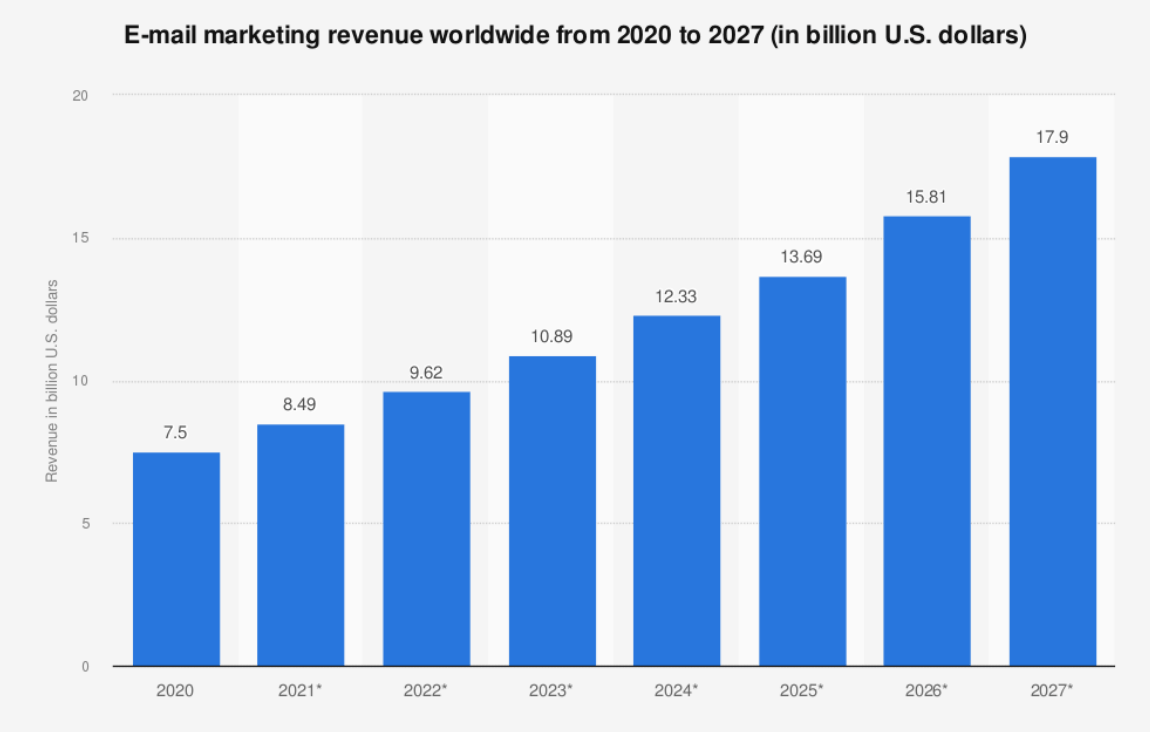 The return on investment (ROI) measures the profitability of your email marketing campaigns. By calculating the email marketing return from your campaigns and comparing it to the cost incurred, you can evaluate the effectiveness and success of your email marketing strategy.
The return on investment (ROI) measures the profitability of your email marketing campaigns. By calculating the email marketing return from your campaigns and comparing it to the cost incurred, you can evaluate the effectiveness and success of your email marketing strategy.
Here’s the formula to calculate the average email ROI:
Return on investment = (email revenue – email marketing cost) / email marketing cost
Expert advice to maximize your ROI:
- Identify high-performing campaigns and strategies and replicate their success.
- Monitor your expenses related to email marketing, such as software costs or advertising fees.
- Track and analyze the actual revenue generated from each email campaign or promotion.
Let’s Discuss Next Email Marketing KPIs.
16. Average Revenue Per Email (ARPE): Unleash Financial Power
The average revenue per email (ARPE) metric calculates the average amount of revenue generated by each email sent. Understand the revenue potential of each email to focus on optimizing content, offers, and email segmentation.
Expert advice to increase your ARPE:
- Implement upselling opportunities within your email strategy.
- Use dynamic content to deliver personalized and relevant product or service information
Let’s Discuss Next Email Marketing KPIs.
17. Lifetime Value (LTV): Tap Into Long-Term Potential
The lifetime value (LTV) metric measures the total value a customer brings to your business throughout their relationship with you. Understanding the long-term value of your customers over a period of time helps you make informed decisions about resource allocation, retention strategies, and customer acquisition efforts.
Here’s how to calculate the LTV:
Subscriber lifetime value = monthly revenue per subscriber x average number of months a subscriber stays on your list
Expert advice to maximize LTV:
- Foster brand advocacy by encouraging customers to refer friends or leave positive reviews.
- Provide exceptional customer service and experiences to foster loyalty and repeat purchases.
- Implement customer retention strategies, such as loyalty programs or exclusive benefits, to encourage long-term relationships.
Let’s Discuss Next Email Marketing KPIs.
18. Conversion Value: Measure Campaign Impact
The conversion value metric measures the monetary value associated with each conversion or desired action taken by a recipient. Assign a value to different actions to assess the impact of your email campaigns on your overall revenue.
Expert advice to measure the conversion value:
- Continuously refine your attribution models to accurately attribute revenue to specific email campaigns.
- Identify high-value actions, optimize your email content, and offer to drive more of these desired conversions.
- Define the value of different actions, such as purchases, form submissions, or sign-ups, based on their contribution to your campaign goals.
Let’s Discuss Next Email Marketing KPIs.
19. Revenue Per Subscriber: Unlock Individual Potential
The revenue per subscriber metric measures the average revenue generated by each subscriber on your email list. Understanding the revenue potential of each subscriber helps you identify segments with high-value customers and tailor your strategies accordingly.
Expert advice to maximize revenue per subscriber:
- Use real-time data-driven insights to identify cross-selling or upselling opportunities to individual subscribers.
- Segment your email list based on audience behavior patterns, preferences, and where they are in their customer journey.
Let’s Discuss Next Email Marketing KPIs.
20. Cart Abandonment Rate: Recover Lost Opportunities
The cart abandonment rate measures the percentage of users who add items to their online shopping carts but leave before completing the purchase. Business owners and marketers now qualify cart emails as an essential part of marketing. Reducing cart abandonment can recover lost revenue and increase overall conversion rates.
Expert advice to minimize cart abandonment:
- Simplify the checkout process and remove any unnecessary steps or distractions.
- Test different strategies, such as offering discounts or free shipping, to entice hesitant shoppers to complete their purchases.
- Optimize your website and product pages to provide clear and detailed information, including pricing, shipping, and return policies.
- Implement abandoned cart recovery emails that remind users of their abandoned items and provide incentives to complete the purchase.
Conclusion Of Email Marketing KPIs
Tracking email marketing performance and setting Email Marketing KPIs (key performance indicators) are crucial for achieving business growth and driving revenue. By monitoring and analyzing the right email marketing KPIs or metrics, you gain valuable insights into your campaign’s effectiveness and can make data-driven decisions to optimize your strategies.
Now armed with a wealth of knowledge about engagement metrics, deliverability metrics, list health metrics, and revenue metrics, it’s time to put these Email Marketing KPIs strategies and techniques into action.
Are you ready to unlock the true potential of your email marketing efforts? If yes, don’t let this valuable information go to waste. Take the necessary steps to implement these essential email marketing KPIs, strategies, and techniques, and watch as your email marketing campaigns flourish.
Do you want to drive exceptional growth and revenue through expertly crafted digital marketing campaigns? Visit VH-info where our dedicated team of skilled professionals understand the power of high-quality backlinks and their impact on search engine rankings and organic traffic.
Whether it’s through guest posting, influencer collaborations, or content partnerships, we’ll ensure your brand gains maximum visibility and attracts targeted traffic. Visit us today and secure powerful and relevant backlinks that propel your business to new heights.
Burkhard Berger
Burkhard Berger is the founder of Novum™. He helps innovative B2B companies implement revenue-driven SEO strategies to scale their organic traffic to 1,000,000+ visitors per month. Curious about what your true traffic potential is?
